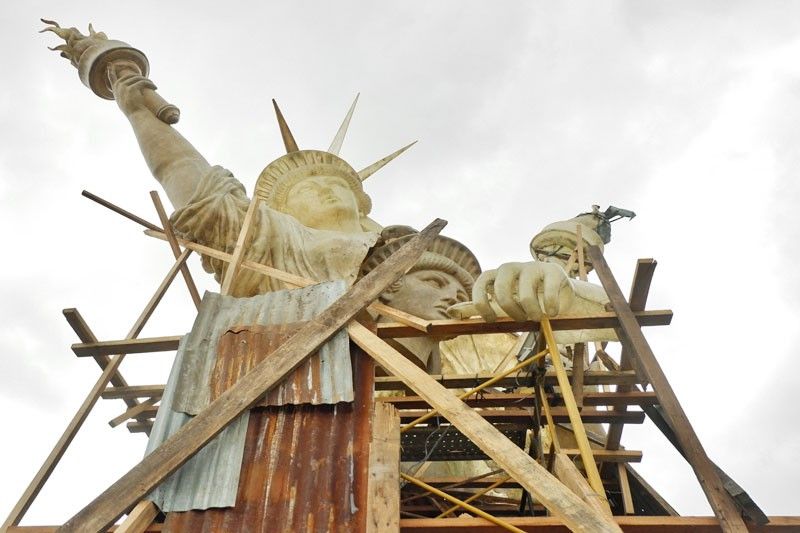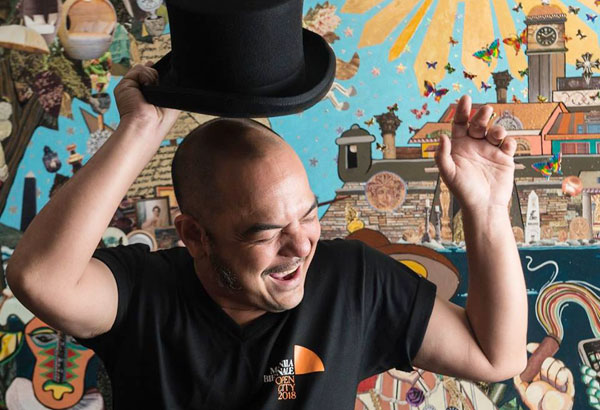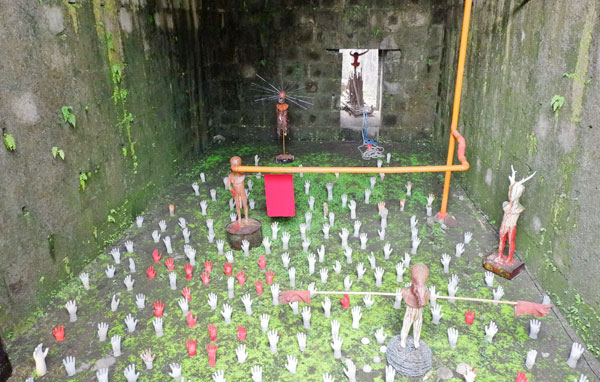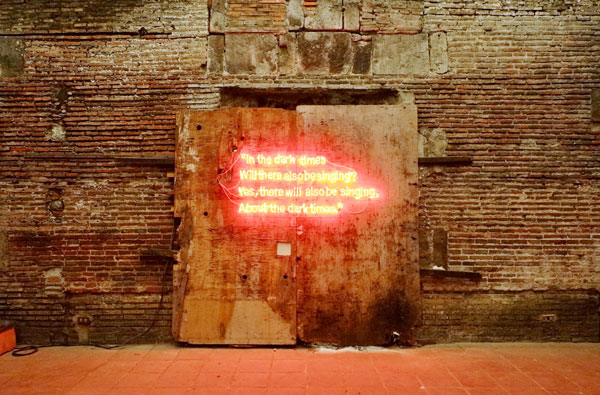Manila Wide Open

MANILA, Philippines — Crazy” is how Carlos Celdran describes the idea of putting together the first-ever Manila Biennale. And perhaps that’s an apt word to use.
You walk around Intramuros, exploring its nooks and crannies while chasing one art installation after another, scattered all over the place. Some will leave you bewildered, while others will force you to look deeper into Philippine history and how it all adds up to define the country we have now. There are a number of scheduled events — from art and food markets to panel discussions, film screenings, and musical performances — all squeezed in for about a month until March 5.
This month-long event is, indeed, crazy.

Carlos Celdran is the executive director of this ambitious project.
It all started one night when Celdran and his artist friends Mitch Garcia, Russ Ligtas and Ian Madrigal were bemoaning the fact that Manila did not have its own biennale. So Celdran didn’t waste any time. “I looked online, saw the name was still available as a domain name, and bought them all in one clean sweep — .ph, .com, .net, .org. It came from the idea that we wanted artists to own the biennale more than anyone else. It felt good that night to buy the name. It felt like artists were beginning to take control of something,” recalls Celdran, the executive director of this ambitious project.
It took 11 months of preparation, and during its inception, people he pitched the project to thought it was impossible to pull off — that, or they were clueless as to what a biennale is. For the uninitiated, “biennale” is an Italian word that means “every other year.” The term was made popular in Venice when, in 1895, it first held a biennale that showcased contemporary art. Since then, a lot of biennales have been held across the globe, from Berlin to Australia, Istanbul to Singapore. Consider it a large-scale art exhibit that goes beyond the confines of galleries and museums, spilling onto streets and public spaces. In Manila Biennale’s case, art is made more interactive as works and performances are staged within the Walled City of Intramuros. With the theme “Open City,” this festival pays homage to Manila’s colorful history, with Intramuros at the heart of the Galleon Trade. The theme also looks back to the time when Manila was at its most vulnerable: Dec. 26, 1941, when General McArthur, in an effort to spare the area from further attack during World War II, ordered all military troops to vacate and declared Manila an “open city.”
The ravages of war may have left Intramuros in ruins, but art always has a way of reclaiming broken things. Take, for instance, the larger-than-life installations: Kawayan De Guia’s version of “Lady Liberty” atop Baluarte de Sta. Barbara, overlooking the Pasig River; Agnes Arellano’s “Angel of Death” and “Bronze Bullets” by the entrance of Fort Santiago; Latvian artist Aigars Bikse’s “Red Slide” right across Manila Cathedral; and Zeus Bascon’s “Dead Masks” set against the backdrop of Manila’s cityscape. Other works compel you to explore dark spaces, like Gerardo Tan’s “Sear To Open” and Oca Villamiel’s “Children of War,” while some beg you to linger a while and ponder the meaning of what’s in front of you — Kiri Dalena’s installations in Puerta Almacenes, Mideo Cruz’s “Golgotha,” and the many works occupying the San Ignacio Church do just that. Injecting a dose of humor are Kolown’s “revisionist” markers that take a dig at how today’s society is readily susceptible to fake news.

Mideo Cruz’s “Golgotha” in Baluarte de San Diego is an unearthly sight.
Con Cabrera, one of the curators for visual arts, shares the laborious process of putting together this event. It involved screening proposals from artists, collaborating with other curators, touring the site, and working closely with the Intramuros Administration in order to come up with the exhibition program. The most challenging part, says Cabrera, was the logistics. “This is the first time where I got to work with mostly site-specific outdoor installations that are spread out and are quite far apart from each other,” she relates. Yet such challenges also gave the participants opportunities to explore more possibilities for their creations. “The venue allows artists to do more and push boundaries of space,” adds Cabrera.
With so many art fairs happening in the metro this month and the next (February is National Arts Month, after all), it’s probably reasonable to ask what’s so special about Manila Biennale. Compared with the comforts of air-conditioned galleries or the ease of navigating a relatively small venue, experiencing this event can be a tad uncomfortable — most of the artworks are set outdoors, and just like the artists who labored tirelessly to showcase their pieces to the public, you will be at the mercy of the elements. (The free e-tricycle ride included in the day pass and passport fell through, unfortunately, but you can opt to take a kalesa). So why even bother? As Celdran so eloquently answers, “It will give you hope. It gave me hope. It stopped me from thinking about what’s wrong with the Philippines and made me think about what’s good about the Philippines — and the best part of us are our artists.”
* * *
For more information about the Manila Biennale, log on to manilabiennale.ph.

In Puerta Almacenes is Kiri Dalena’s “In the dark times, will there also be singing? Yes, there will also be singing. About the dark times.”















